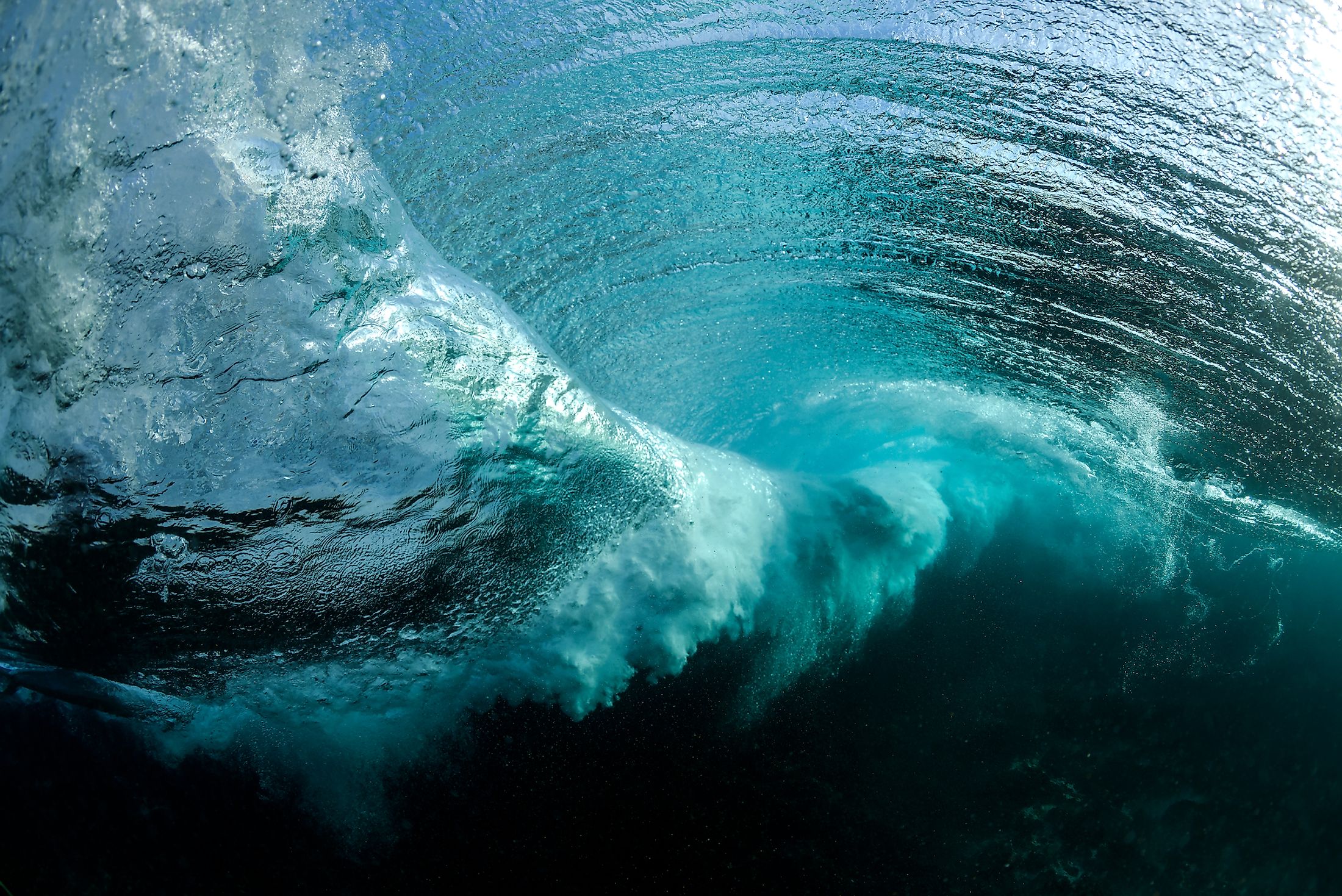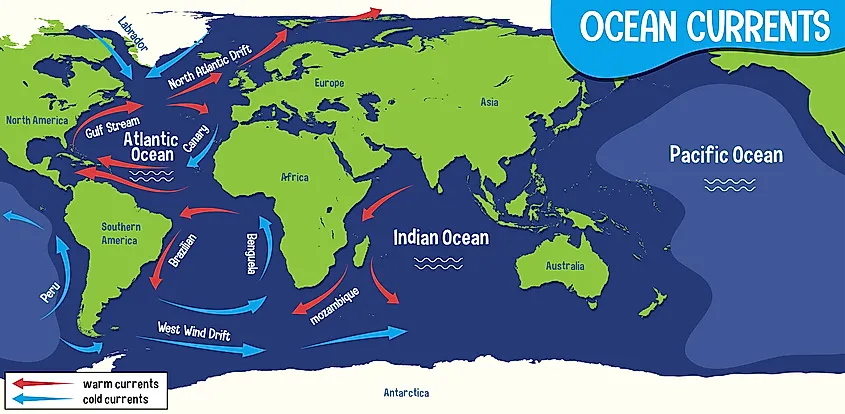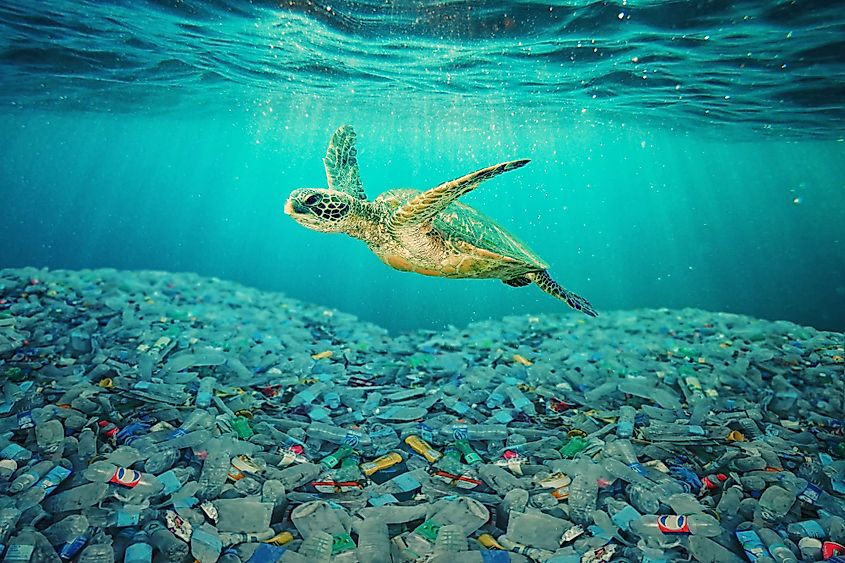
Ocean Gyre
An ocean gyre is a term given to any large-scale system of cyclical ocean currents, especially those associated with significant wind systems. These gyres are created by several factors, including the Coriolis Effect and the tilt and vortexes of the planet they are on. On Earth, the circular patterns are determined by horizontal and vertical wind friction, which creates torque and causes the currents to curl.

How Is An Ocean Gyre Formed
An ocean gyre is created when both the force of the wind and the Coriolis Effect are acting on the water in the ocean. The wind pushes the ocean water forward, while simultaneously, wind patterns are altered by the Earth's natural spin, which causes the water and wind to move in a circular, spinning motion. For the Earth, the Coriolis Effect tends to deflect objects clockwise in the northern hemisphere and counterclockwise in the southern hemisphere. The proximity and size of nearby continents also affect the gyres. The gyre cannot extend past land, so the continents form a type of barrier or boundary which limits their size and shape.
Where Can You Find Ocean Gyres
On Earth, there are five major ocean gyres, which are named based on their geographical locations. They are:
- North Pacific Gyre
- South Pacific Gyre
- North Atlantic Gyre
- South Atlantic Gyre
- Indian Ocean Gyre
There are also several smaller ocean gyres as well, some of which are located in the Arctic Ocean.
The Other Types Of Ocean Gyres
In addition to the above mentioned five major ocean gyres, there are three other types of ocean gyres, which are:
- Tropical gyres
- Subtropical gyres
- Subpolar gyres
Tropical Gyres
Gyres found in the tropical region are located closer to the Equator. Notably, the shape of gyres in this region is much more elongated rather than cyclical. The Coriolis Effect has little or no effect at the Equator, so the main force acting on the ocean is wind.
Subtropical Gyres
Most of the ocean gyres on Earth fall into the category of Subtropical gyres. They occupy the ocean waters that fall between the Equator and the polar caps. These gyres can be extremely large in size, sometimes reaching as far as thousands of kilometers across.
Subpolar Gyres
Subpolar gyres - as the name suggests - are located closer to the poles, meaning they are at the extreme north and south points on Earth. These gyres tend to be much smaller than other gyres and are usually restricted in size by large landmasses. This can be seen in the gyres bordered by Iceland, Greenland, or the Aleutian Islands and the north edges of major continents like North America, the north point of Europe, and Asia.
What Lives Within An Ocean Gyre
In large ocean gyres, the circular currents create a calm and rather still center. Because of this low current area, not many nutrients can be found here. This means that creatures that would feed on these nutrients are also less common - like plankton and algae, who tend to reside in high-current areas with high nutrient flow. The lack of plankton also means other animals are not attracted to these areas, and thus the gyres are low in organic life. It is notable, as well, that this low-current (or oligotrophic) gyre centers are growing in size. It is estimated that this growth is due to the rising ocean temperatures since warmer waters tend to have fewer nutrients.
Climate Change And Environmental Concerns

Though the gyres themselves are constantly in motion, the circular currents create slow-moving or 'dead zones' in their center. This may not seem concerning until you factor in the presence of garbage and inorganic matter. When debris is swept up into a gyre - for example, plastic within the ocean - it eventually makes its way into the gyre's center, where the current drops and slows. Without a flowing current, the debris collects in large 'garbage islands' and has no moving force to push it out of the cycle. Instead, it is trapped within the gyre until it eventually decays, which often takes many years. There are large garbage islands within the gyres of the North Atlantic Ocean, Indian Ocean, and the North Pacific Ocean. The gyres at the North Pacific Ocean is often referred to as the Pacific Trash Vortex or Great Pacific Garbage Patch because of its sheer size. It is difficult to determine the exact size of this garbage patch because there are both large size debris and tiny plastic particles in the area which have broken down over time. This means that the water in this region is saturated with plastic particles and floating debris. However, what can be determined is that these patches continue to grow, creating larger and larger 'dead zones.' Without a change, it is forecast that both the currents will continue to decrease, temperatures will rise, and debris will also increase, meaning these garbage patches are set to grow at alarming rates.











